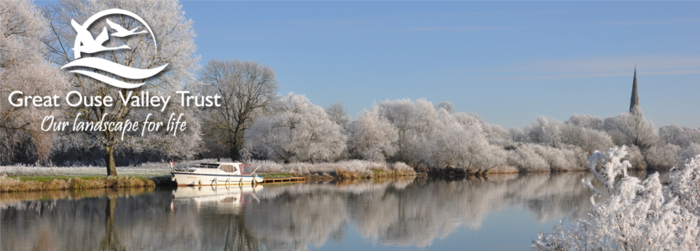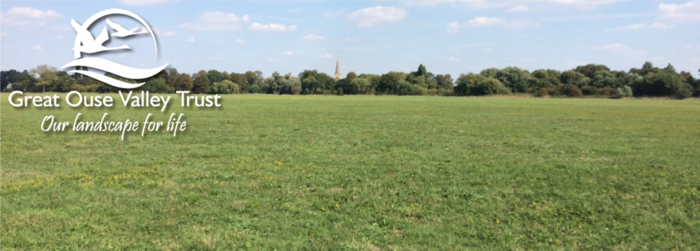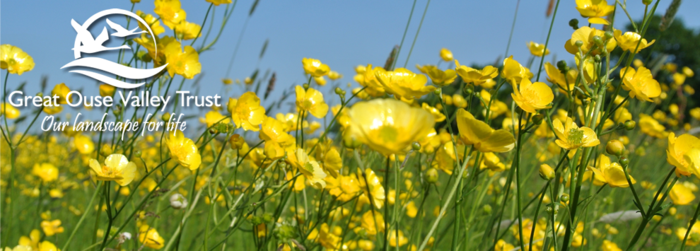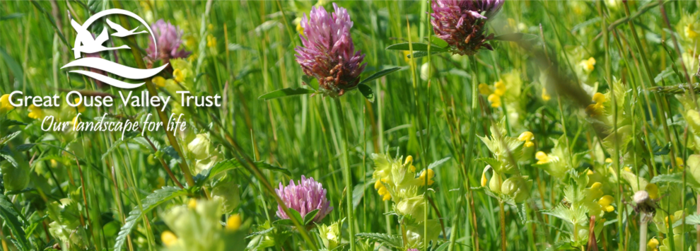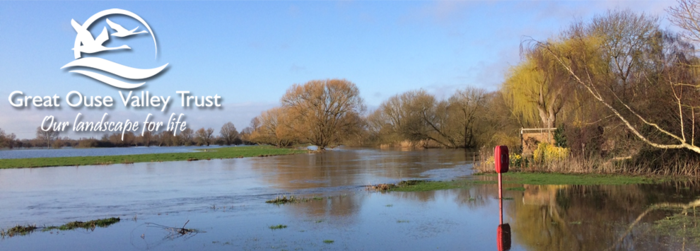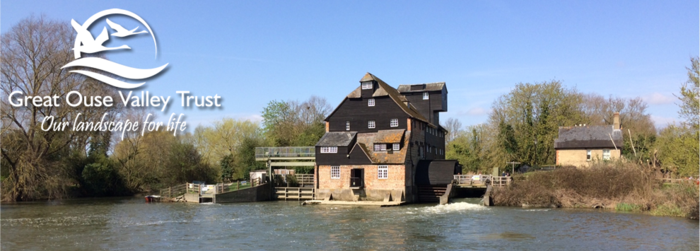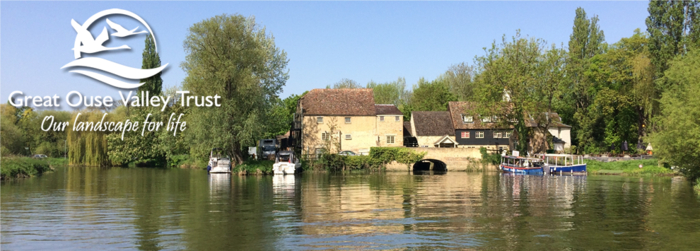Solar Panel Park for Buckden?
We learn from Buckden Parish Council that a company called ADAS propose a solar park at Low Farm, west of Offord Cluny. The site identified comprises 26 hectares and it is claimed it will generate enough clean renewable energy to power over 4,250 homes (source ADAS consultation document). The pre-application consultation was presented to BPC Planning Committee in December 2021. Cllrs pointed out that the Buckden Neighbourhood Plan makes clear that the NP requires that no development takes place there, and that they wish the Great Ouse Valley should be protected from such development. The Trust is aware that solar panel parks/farms can contribute to the increasing need for us to develop alternative ways to generate energy and that solar panels allow continued use of the land for grazing, and need not be permanent. The debate may revolve around the definition of ‘development’ and the visual impact within the valley. We await to see if a formal Planning Application is submitted and a Public Consultation announced before we comment further.
DOWNLOAD CONSULTATION DOCUMENT AS PDF
GOVT’s response to the Government’s ‘Planning for the Future’ White Paper
Our thanks to all Partner Members and others who contributed to our survey last month (October 2020). Here now is our response to the Government’s White Paper consultation.
Great Ouse Valley Trust (GOVT) is a charity set up in 2018 whose charitable objective is to promote for public benefit the conservation, restoration and enjoyment of the landscape, wildlife and heritage of the Great Ouse Valley and environs in the county of Cambridgeshire. Future planning applications and processes have a direct impact upon the charity’s objective. GOVT’s ambition is to achieve Area of Outstanding Natural Beauty Status (AONB) for this special place in order to protect and enhance its beauty. GOVT has 26 Partner Members which include Parish and Town Councils along the River Great Ouse, as well as national and local wildlife and heritage organisations who support GOVT’s ambition and objectives. In responding to this consultation we asked for feedback from our partner members and supporters, so that our response reflects the views of people who know and value this area.
Summary
GOVT welcomes the opportunity to comment on how planning reform can integrate with the Government’s 25-year Environment Plan and Environment Bill as well as the Government’s targets for Climate Change. In Cambridgeshire changes in the planning system could provide a real opportunity to double the area of rich wildlife habitat and natural green space from 8% to 16%. In order for this to happen nature has to be at the start as well as the heart of the planning system, so that every development is nature friendly and achieves an improvement in the overall biodiversity of the area. As it stands currently, GOVT has real concerns that nature is not at the heart of this simplified planning reform. But we would welcome an integrated planning system supporting eco-systems and investment in natural infrastructure, so that we can all make best use of Cambridgeshire’s scarce land resource.
Engagement with the Planning Process
GOVT speaks with experience when it comes to engagement with the Planning System at a local authority level. The ambition to make the planning system more understandable, accessible and opening it up to a wider range of voices is to be welcomed. However, the presumption of only allowing a six-week window for local consultation for a Local Plan does not meet this ambition. Feedback to our questionnaire indicated elected representatives at Parish and Town Councils think they would have less involvement in the planning system, rather than more, if the planning white paper were to become law. There are examples of how local groups such as GOVT have made a difference to individual planning applications and to lose this right to be able to voice concerns is undemocratic. Research from the Royal Society for the Protection of Birds (May 2020) confirms that 70% of respondents in the Eastern Region believe that rapid economic growth should not be pursued at the expense of protecting nature. And 76% supported the idea that nature could contribute to economic recovery by reducing the risk of other economic challenges, such as flooding, water supply, tourism and air and river quality.
Local communities know their local areas and through the 2011 Localism Act have been able to demonstrate this through the development of Neighbourhood Plans which provide a depth and richness of understanding not seen in the Local Plan. The Neighbourhood Plan policies need to retain some status within the proposed changes to Development Management Policies.
Land use planning (zones)
In GOVT’s survey responses from Partner Members we noted that (naturally) the most valuable aspects relate to where people live. It was strongly stated that what needs to be included in future planning policy is consideration for the natural environment and the protection of easily accessible countryside and green spaces. These concerns were closely followed by the need to support the local economy and the protection of existing heritage buildings and areas.
Whilst the ‘protected’ areas proposed in the White Paper go some way in affording protection to the most valuable green spaces, GOVT does not feel this goes far enough as the degree of protection will depend on the housing requirement. GOVT would support the notion of ‘Highly Protected Areas’ and ‘Nature Recovery Areas’ which supports Cambridgeshire’s target of doubling nature, as well giving the Great Ouse Valley the protection it deserves. Biodiversity net gain must be achieved in all areas, and to have a much better environmental information base upfront to inform decision making in a more strategic manner would be welcomed.
However, strategic approaches to land-use planning can never entirely replace the need for site-specific, historical local knowledge which is aware of habitat sensitivities and possible opportunities not seen from a top-down, desk operation.
Update on the proposed Third River Crossing - July 2020
We are pleased to report the successful outcome of our campaign against the plans for a Third River Crossing. Please see Media Release: Third River Crossing Plan withdrawn 23 June 2020 and News Update from the Chair – July 2020
How you can voice your opinion on the proposed Third River Crossing
We have had success recently in gaining local media coverage of the Cambridge and Peterborough Combined Authority’s Local Transport Plan, and in particular the recent adoption of two local Prospectus for Growth reports (Huntingdon and St Ives). These contain references to a proposed river crossing between Huntingdon and St Ives and our concern is that the only suitable ‘non-built-up’ site for such a construction is between Houghton and Godmanchester. This has naturally attracted attention and we have received a number of requests from local residents who ask,’ What can we do’?
If you are as concerned as we are about this proposal and the way it is being processed through the Local Authority’s approval systems, then here are suggestions from the Trust to answer this question. The truth of the matter is that the current crisis and the effect it is having on Local Authority decision-making is making it difficult for the public to be as informed as usual. When the issues are as important as this then we believe it is our duty to do our utmost to bring them to your attention and invite you to contribute your voice to the forum in the following ways. Thank you for your support.
- Please write to your MP, Jonathan Djanogly , plus your District and/or County Councillor. You can find out who these are for your location from the District Council website Huntingdonshire District Council Contact Us and the County Council website Cambridgeshire County Council Contact Us
You can use the following information and the following questions plus anything else you see on the Great Ouse Valley Trust website to focus your communication:
The Mayor of Cambridge and Peterborough has proposed a new road, crossing the Great Ouse east of Huntington. The proposal has now also found its way into growth plans for Huntington and St Ives. The Mayor is spending hundreds of thousands of pounds on feasibility studies for a road that in a very short length may cross or come very close to a Site of Special Scientific Interest, a Wildlife Trust Nature Reserve, a Conservation Area, a proposed Area of Outstanding Natural Beauty, several wildlife-rich fisheries, areas of open water, woodland and reedbed, a local Nature Reserve, a proposed Country Park and Common Lands. It potentially crosses part of the largest remaining expanses of rare flood-plain meadows in England and an ancient landscape beloved of artists and dotted with willows, wetlands and woodlands. Within close sight of the National Trust property of Houghton Mill, the proposed dual carriageway road would need to be elevated for much of its length to take it above flood level, and will constitute a massive intrusion in this picturesque part of the Ouse Valley, beloved of walkers and river users alike. The end product will be similar to the old A14 where it crosses the Ouse next to the Old Bridge in Huntington. The legality of the Mayor’s transport strategy has been questioned. The town growth plans referred to have had minimal public consultation or scrutiny. It is also unclear to what extent the public will be consulted on, or given access to, the proposed feasibility study on the crossing and associated roadworks. The cost of the feasibility study, the road and the bridge are of course colossal. The damage to our irreplaceable landscape and wildlife is incalculable.
- Please question this waste of public funds on a project of unproven and questionable value where little attention has been given either to the case or the alternative options
- Please question why the public have had so little opportunity so far to comment or object to these proposals
- Please question if such proposals for transport pass the Paris Climate Change Agreement Please question what, if any, environmental impact assessment is or will be taking place and if so demand that it be made public
- Please question how such a development supports the Government’s stated strategy for nature conservation and the environment proposed in the 25-year Environment Plan, or the proposals contained in the Government’s Environment Bill pledging to reduce carbon emissions to zero by 2050 (see this link for further information on this issue: Forbes Website)
- Please question where are the Cambridgeshire County Council or the Huntingdonshire District Council policies that should be protecting our precious and diminishing landscape assets
If you would like us to have a copy of your correspondence and the responses you receive then we shall be pleased to keep this in order to build a picture of public opinion to inform our planning. We of course undertake to not disclose this to any third party without your permission. Thank you for your interest in the Great Ouse Valley Trust and its efforts to preserve and protect our precious landscape. If you are interested in joining our proposed new Supporters’ Group then please use this website to let us know.
Proposal for River Crossing between Huntingdon and Houghton
The Peterborough and Cambridgeshire Combined Authority is actively developing a proposal for a further river crossing to bridge the Wyton and north Huntingdon development sites with the A14. This proposal is currently the subject of a feasibility study and is included in the Authority’s proposals for a Local transport Plan which is currently out for consultation. You can find out more about the transport strategy and the road crossing among many other transport issues here. https://cambridgeshirepeterborough-ca.gov.uk/about-us/programmes/transport/ltp
Needless to say GOVT view this proposal with grave concern. We do not doubt that there is a case for improved transport systems to provide for the new housing and business development. However, we seriously question the sustainability of putting a new road across the river and its flood plain at this point. It is one of the best examples of our Great Ouse landscape left unsullied by development and contains not just an important landscape but also sites of very high nature conservation interest plus a recreational resource second to none in the valley. We will be seeking further discussions with the appropriate authorities and providing comments to the transport consultation reference above. We would encourage all those with an interest in the valley to do likewise.
Please see NEWS AND EVENTS for the GOVT response to the consultation
Housing development proposal - Buckden
Ref. 18/01395/OUT. The erection of up to 230 dwellings with public open space, landscaping and sustainable drainage system (SuDS). Land North of Mill Road Buckden
This planning application for over 200 houses off Mill Road in Buckden remains in consideration by Huntingdon District Council. Whilst not included in plans for housing development in the area it has still not been rejected. There is much local opposition for reasons of traffic, landscape, village envelope expansion and wildlife to name but a few. GOVT has objected to this application owing to its two-fold impact on the landscape of the Ouse Valley: it is in a prominent position overlooking the valley; and the area is important for breeding and wintering birds. GOVT will continue to maintain its objection and is in discussions with Buckden residents about the matter.


